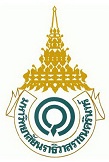อุบัติการณ์และปัจจัยทำนายการเกิดภาวะแทรกซ้อนของ ผู้ป่วยโรคหลอดเลือดสมองในระยะฟื้นฟู โรงพยาบาลทุ่งเขาหลวง จังหวัดร้อยเอ็ด
คำสำคัญ:
อุบัติการณ์, ภาวะแทรกซ้อน, ผู้ป่วยโรคหลอดเลือดสมอง, ระยะฟื้นฟูบทคัดย่อ
การวิจัยเชิงพรรณนาแบบวิเคราะห์ข้อมูลย้อนหลัง เพื่อศึกษาอุบัติการณ์และปัจจัยทำนาย
การเกิดภาวะแทรกซ้อนของผู้ป่วยโรคหลอดเลือดสมอง ในระยะฟื้นฟู โรงพยาบาลทุ่งเขาหลวง
จังหวัดร้อยเอ็ด กลุ่มตัวอย่าง คือ ผู้ป่วยโรคหลอดเลือดสมองในระยะฟื้นฟู ที่นอนพักรักษาตัวที่หอผู้ป่วยใน โรงพยาบาลทุ่งเขาหลวง ระหว่างวันที่ 1 มกราคม 2561 ถึง 31 ธันวาคม 2565 ที่มีคุณสมบัติผ่านเกณฑ์คัดเข้าศึกษา จำนวนทั้งสิ้น 136 ราย เก็บข้อมูลโดยวิธีรวบรวมข้อมูลจากเวชระเบียนโดยใช้แบบบันทึกข้อมูล โดยมีค่าความตรงเชิงเนื้อหา = 1 วิเคราะห์ข้อมูลกลุ่มตัวอย่างด้วยสถิติเชิงพรรณนา และวิเคราะห์อำนาจการทำนายด้วยสถิติ multiple logistic regression
ผลการวิจัยพบว่า กลุ่มตัวอย่างจำนวน 136 ราย เกิดภาวะแทรกซ้อน ร้อยละ 58.09 แบ่งเป็น
ปอดอักเสบ ร้อยละ 44.30 แผลกดทับ ร้อยละ 32.91 การติดเชื้อในระบบทางเดินปัสสาวะ ร้อยละ 13.92 และภาวะข้อติดกล้ามเนื้อลีบ ร้อยละ 8.86 ปัจจัยทำนายการเกิดภาวะแทรกซ้อนของผู้ป่วยโรคหลอดเลือดสมองในระยะฟื้นฟู โรงพยาบาลทุ่งเขาหลวง ได้แก่ เพศชาย (OR Adj 3.56; 95 % CI = 1.33, 9.54; p = 0.012) คะแนน ADL 25 – 45 คะแนน (OR Adj 7.38; 95 % CI = 1.48, 36.89; p = 0.015) คะแนน ADL 75 – 90 คะแนน (OR Adj 4.64; 95 % CI = 1.08, 19.86; p = 0.039) ปัญหาการเคี้ยวกลืน (OR Adj 9.06; 95 % CI = 2.66, 30.85; p < 0.001) และปัญหาด้านการควบคุมการขับถ่ายปัสสาวะ/อุจจาระ (OR Adj 9.35; 95 % CI = 1.41, 61.86; p = 0.020)
References
Ahmad, M., Ayaz, Z., Sinha, T., Soe, T. M., Tutwala, N., Alrahahleh, A. A., Arrey Agbor, D. B., & Ali, N. (2024). Risk Factors for the Development of Pneumonia in Stroke Patients: A Systematic Review and Meta-Analysis. Cureus, 16(3), e57077. https://doi.org/10.7759 /cureus.57077
Badve, M.S., Zhou, Z., van de Beek, D., Anderson, C.S., & Hackett, M.L. (2019). Frequency of post-stroke pneumonia: Systematic review and meta-analysis of observational studies. International journal of stroke: official journal of the International Stroke Society, 14(2), 125 – 136. https://doi.org/10.1177/1747493018806196
Balcerak, P., Corbiere, S., Zubal, R., & Kägi, G. (2022). Post-stroke Dysphagia: Prognosis and Treatment-A Systematic Review of RCT on Interventional Treatments for Dysphagia Following Subacute Stroke. Frontiers in neurology, 13, 823189. https://doi.org/10.3389/ fneur.2022.823189
Chohan, S.A., Venkatesh, P.K., & How, C.H. (2019). Long-term complications of stroke and secondary prevention: an overview for primary care physicians. Singapore medical journal, 60(12), 616 – 620. https://doi.org/10.11622/smedj.2019158
Cicek, E.D., Alkan, A.Ö., Yukselen, N.P., Onal, Y., Karakas, H.M., & Vural, A. (2024). Pressure ulcer development in patients treated for acute ischaemic stroke. Journal of wound care, 33(6), 441 – 449. https://doi.org/10.12968/jowc.2020.0331
Elkind, M.S., Boehme, A.K., Smith, C.J., Meisel, A., & Buckwalter, M.S. (2020). Infection as a Stroke Risk Factor and Determinant of Outcome After Stroke. Stroke, 51(10), 3156 – 3168. https://doi.org/10.1161/STROKEAHA.120.030429
Garavelli, F., Ghelfi, A.M., & Kilstein, J. G. (2021). Usefulness of NIHSS score as a predictor of non-neurological in-hospital complications in stroke. Utilidad del score NIHSS como predictor de complicaciones intrahospitalarias no neurológicas en ictus isquémico. Medicina clinica, 157(9), 434 – 437. https://doi.org/10.1016/j.medcli.2020.07.034
Gu, M., & Huang, H. (2023). Effect of early rehabilitation nursing on neurological function and quality of life of patients with hemiplegia after stroke: A meta-analysis. Medicine, 102(34), e34919. https://doi.org/10.1097/MD.0000000000034919
Health Administration division Office of Permanent Secretary. (2019). Guideline for intermediate care. Born to be publishing.
Hosmer, D.W., & Lemeshow, S. (2000) Applied logistic regression (2nd Ed.). John Wiley & Sons.
Jullamate, P. (2021). Geriatric nursing, Cerebrovascular disease [Master’s thesis]. Burapha University.
Leangpanich, N., Chuphanitsakun, Y., Pakaranodom, K., Kerdjarern, K., & Poonual, W. (2019). Scoring Of Post Stroke Pneumonia In Uttaradit Hospital. Journal of multidisciplinary healthcare, 12, 917 – 923. https://doi.org/10.2147/JMDH.S218654
Neurological Institute of Thailand. (2015). Clinical Nursing Practice Guideline for Stroke. Tana Press Co., Ltd.
Pairohsathien, S. (2023). Association between the Severity of Acute Ischemic Stroke and its Complications after Hospitalization. Singburi Hospital Journal. 23(1), B1 - B13. https://he01.tci-thaijo.org/index.php/shj/article/view/262661
Pukkaeraka, W., Somgit, W., Vibulchai, N., & Dejsiri, S. (2022). Development of a Nursing Management Model for Preventing Pressure Ulcers among Neurosurgical Critical Patients. Journal of Phrapokklao Nursing College, Chanthaburi, 33(2), 81 – 98. https://he01.tci-thaijo.org/index.php/pnc/article/view/259146
Schwarzbach, C.J., & Grau, A.J. (2020). Komplikationen nach Schlaganfall: Klinische Herausforderungen in der Schlaganfallnachsorge [Complications after stroke: Clinical challenges in stroke aftercare]. Der Nervenarzt, 91(10), 920 – 925. https://doi.org/10.1007/ s00115-020-00988-9
Somgit, W., Srisawas P., & Phuthikhamin N. (2021). Factors Predicting Pneumonia in Stroke Patients: A Systematic Review. Royal Thai Navy Medical Journal. 48(3), 742 – 758. https://he01.tci-thaijo.org/index.php/nmdjournal/article/view/253412
Tater, P., & Pandey, S. (2021). Post-stroke Movement Disorders: Clinical Spectrum, Pathogenesis, and Management. Neurology India, 69(2), 272 – 283. https://doi.org/10.4103/0028-3886. 314574
Tiamkao, S. (2022). Stroke: Situation report. Thai Journal of Neurology. 39(2), 39 – 46.
http://neurothai.org/images/journal/2023/vol39_no2/06%20Original%20Somsak%20Ubatkarn.pdf
Thung Khoa Luang Hospital. (2023). Statistics report: incidence report. Author.
Wang, S., Zou, X.L., Wu, L.X., Zhou, H.F., Xiao, L., Yao, T., Zhang, Y., Ma, J., Zeng, Y., & Zhang, L. (2022). Epidemiology of intracerebral hemorrhage: A systematic review and meta-analysis. Frontiers in neurology, 13, 915813. http://doi.org/10.3389/fneur.2022.915813
World Stroke Organization. (2022, August 3). ANNUAL REPORT 2022. https://www.world-stroke.org/assets/downloads/WSO_Annual_Report_2022_-_online.pdf
Xu, C.Y., Ye, H.W., Chen, B., Wu, Y.F., Cao, Z., Ding, Z., Yao, Y.P., Gao, Y., Li, J., Zhu, J. J., & He, S. (2021). Analysis of risk factors and prognosis of post-stroke pulmonary infection in integrated ICU. European review for medical and pharmacological sciences, 25(2), 856 – 865. https://doi.org/10.26355/eurrev_202101_24654
Yoshimura, Y., Wakabayashi, H., Bise, T., Nagano, F., Shimazu, S., Shiraishi, A., Yamaga, M., & Koga, H. (2018). Sarcopenia is associated with worse recovery of physical function and dysphagia and a lower rate of home discharge in Japanese hospitalized adults undergoing convalescent rehabilitation. Nutrition (Burbank, Los Angeles County, Calif.), 61, 111 – 118. https://doi.org/10.1016/j.nut.2018.11.005

Downloads
เผยแพร่แล้ว
How to Cite
ฉบับ
บท
License
Copyright (c) 2025 วารสารมหาวิทยาลัยนราธิวาสราชนครินทร์

This work is licensed under a Creative Commons Attribution-NonCommercial-NoDerivatives 4.0 International License.


